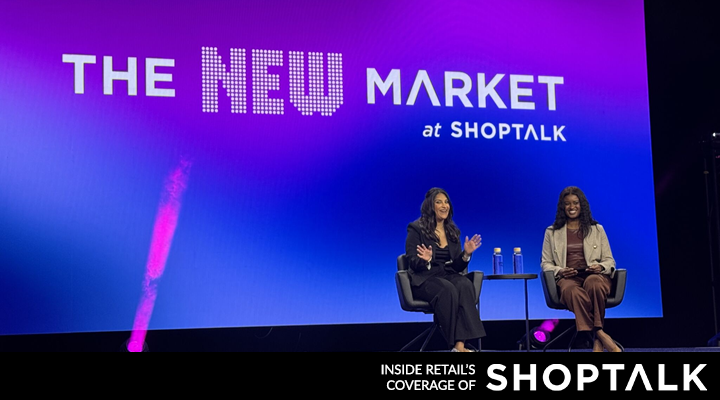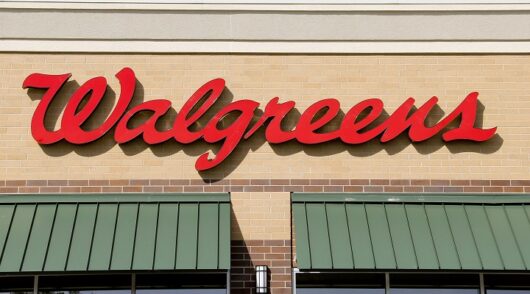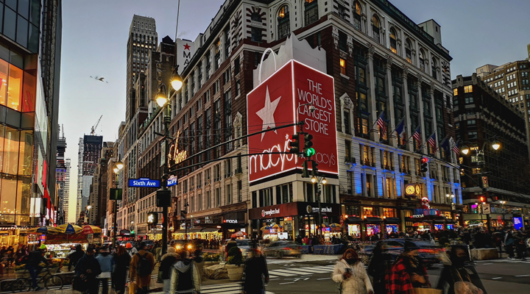The third and final day of Shoptalk Spring brought together retail’s biggest players including, Sean Scott, vice president and general manager of consumer shopping for Google, Adeela Hussain Johnson, CEO of luggage retailer Béis, Jon Blotner, president of commercial and operations for Wayfair, and Amanda Bailey, vice president of loyalty and customer marketing for Lowe’s.
The executives discussed a range of topics that are top of mind for retailers right now, from strategies for keeping up with shifting consumer behaviors to defining and earning loyalty in a crowded retail environment.
From decisions to discovery: Adapting to shifting consumer behavior
“Consumer behavior has changed forever,” Scott, Google’s manager of consumer shopping, warned during Shoptalk’s first keynote of the day.
Scott elaborated to say that the days of consumers simply seeking out a product in-store or online via a singular search route are long gone.
Today, four key shopping behaviors define a harmonic shopping journey, which include streaming, scrolling, searching and reading.
An example of how shopping has shifted in today’s digital era can be seen in how consumers are not only able to search for products via a brand’s website but can find a product, or similar versions of it, just by taking a photo of a product and uploading it to Google.
“This shopping journey is entirely unpredictable,” Scott emphasized. “But the good news is that it means there are countless opportunities to influence customers.”
In addition to tapping into AI for its ability to run more personalized ads, Scott recommended that retailers continue tapping into the power of a powerful brand narrative.
Pointing to an Urban Decay campaign regarding the relaunch of a formerly discontinued palette, Scott pointed out that the beauty retailer was able to garner a 278 per cent spike in searches, largely through its promotion of YouTube shorts featuring popular influencers.
Seeing how these influencers were able to connect with a primarily Gen Z audience, a generation that is highly perceptive to authentic influencer campaigns, Scott noted that this demonstrated “the power of the creative community”.
How Béis transforms consumer understanding into innovation and growth
Speaking of knowing how to tap into the power of the creative community, few brands are as adept at understanding their customer as Béis.
From hosting interactive activations that allow consumers to connect with the brand on a one-on-one basis to specifically creating content tailored for various social media platforms, Béis strives to meet customers on a hyperpersonalized level to better understand them and their needs.
The next step in the brand’s ongoing expansion strategy is delving further into international markets, such as Europe.
However, as Béis makes approximately 90 per cent of its profits off of digital platforms, Johnson explained that it will require the brand to develop its omnichannel presence.
“As we grow our international consumer base, it’s going to be important to show up the way they [the European customer] expect us to. A switch that is going to require us to have a greater wholesale business, which hasn’t been in front of our DNA so far, but which we really want to grow at scale and are ready to do so perfectly.”
Defining and earning loyalty in a crowded retail environment
Acquiring customers in today’s hypercompetitive retail environment is difficult enough. The only thing more difficult, arguably, is retaining those customers, especially in today’s unsteady economic times when shoppers are seeking out more price-accessible options.
This is where incentives like loyalty programs and a strategic plan to truly understand the customer and their needs will play a vital role, executives from Wayfair, DSW and Lowe’s similarly concluded.
Blotner, Wayfair’s president of commercial and operations, explained that it is vital for retailers to “create a loyalty program that is meaningful to customers”.
Blotner pointed out common customer complaints with loyalty programs such as a high investment of time, money or energy with little return to be shown.
Aware of those issues, Wayfair made sure to include incentives that truly give back to the consumer with its Wayfair Rewards program, which launched six months ago. These incentives include the ability to earn 5 per cent back in rewards and gain exclusive access to sales.
Before a brand even starts to consider creating monetary or other similar incentives, DSW’s chief marketing officer Sarah Crockett and Lowe’s Bailey emphasized the importance of taking the time to properly study the consumer.
Lowe’s Bailey stated that it is important to “ know your customer and know who you have a right to win with”.
As the Lowe’s executive elaborated to an audience full of watchful retailers, “At the end of the day, loyalty is just understanding your customer, figuring out how you can help them and giving them something that that they can interact with. Use the data and meet them where they are, that’s a huge part of having a relationship with customers.”
Crockett added that data “tells us what conversations we should be having with them [the customer].”
Whether you’re a tech giant like Google or a quickly growing accessories retailer, it is important to always remember to meet your customers where they are, be it with content creation, product or loyalty initiatives.






